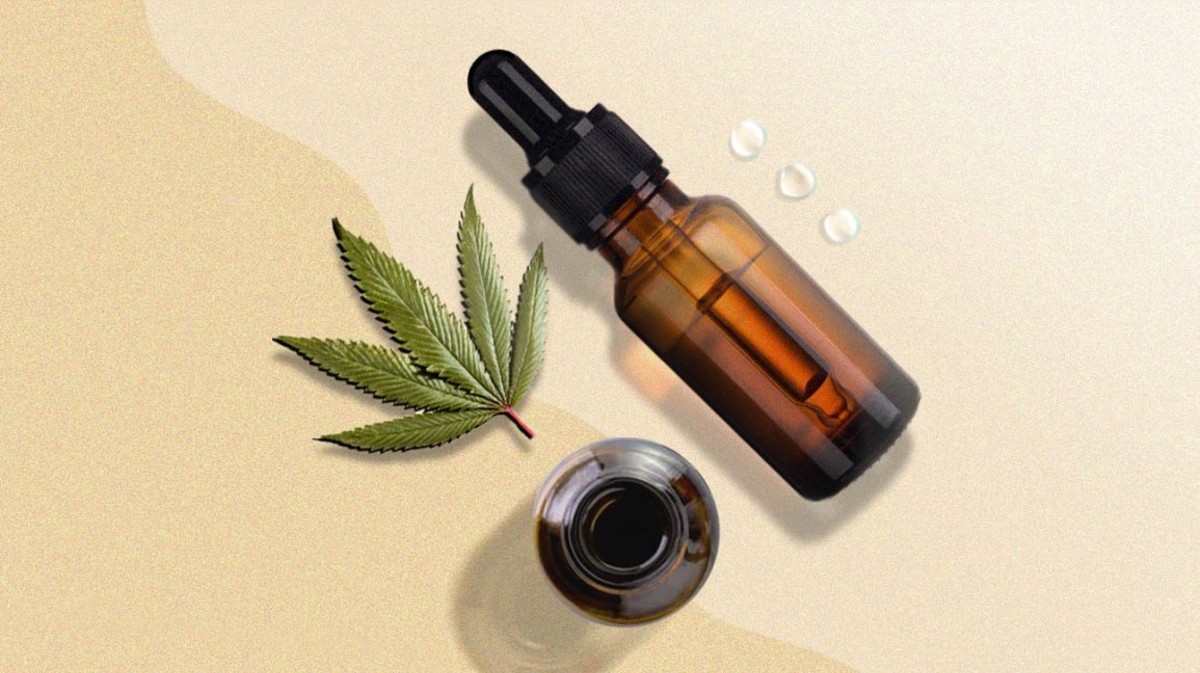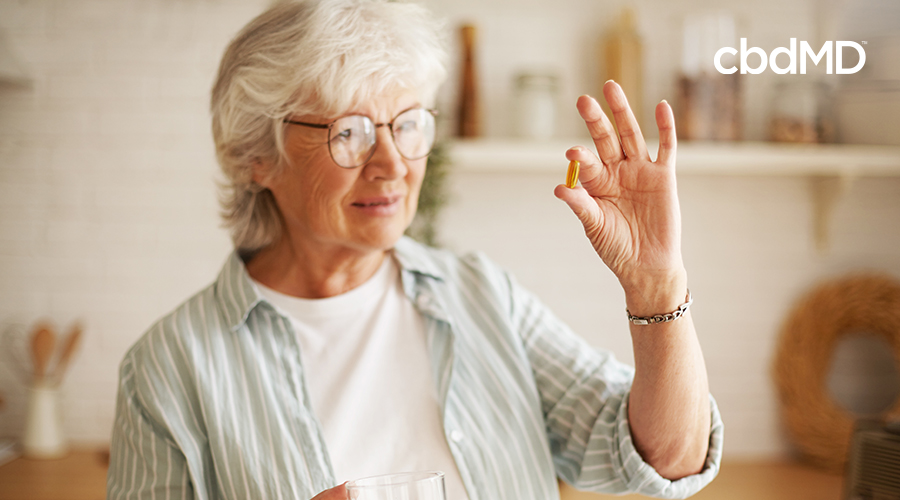
Understanding CBD's pharmacological properties requires an understanding of its chemical structure. It contains a hydroxyl group and is bicyclic (see Fig. 1). This structural difference gives CBD a different pharmacological profile to THC.
The chemistry of cannabinoid biosynthesis
The cannabinoids that are found naturally in Cannabis sativa (such as THC, CBD) are biosynthesized from an alic precursor called cannabigerolic, or CBGA. This acid is then cyclized by cannabigerolic acid synthase into tetrahydrocannabinolic acid (THCA) and cannabidocannabinolic acid (CBDA), which then enter the endocannabinoid system to interact with cannabinoid receptors on various cell types in the body.
These receptors have been associated with a range of effects on the brain including euphoria. The endocannabinoid is also responsible for regulating many other functions such as memory and metabolism.
Cannabinoid derivatives
There have been many synthetic cannabinoid-derived compounds. They each have their own unique pharmacological profiles as well as potential applications. They include anti-inflammatory, neuroprotective and immunomodulatory compounds.

They can also be used to reduce side effects from chemotherapy and as antiemetic. They are also known to inhibit biofilm formation by Streptococcus muris, which is linked with dental caries.
Many are being used in clinical trials for various conditions including multiple sclerosis, cancer, epilepsy, and neuropathy.
Cannabinoid derivatives of cannabinoids are being investigated for their potential anti-inflammatory as well as antioxidant properties. They may be beneficial in the treatment osteoarthritis, rheumatoid and other forms of rheumatoid joint disease.
A growing interest is being shown in the modification of cannabinoid structure to increase their pharmacological properties. In particular, it has been observed that the two-ring structure of cannabidiol can be modified in a way to increase its pharmacological activity.
For example, one study reported that a cannabinoid derivative called HU-210 was 100-800 times more potent than THC in terms of its anti-inflammatory effect. It is a highly versatile compound that can be used to treat several inflammatory conditions and also has anti-anxiety, antiemetic and spasmolytic properties.

A sustained-release varnish that contains triclosan, cannabidiol and cannabidiol is more effective than any component on its own at preventing the formation of bacterial biofilms. This promising new tool can be used to prevent the spread and spread of oral infection such as S.mutans.
Beilstein, which is the largest source of information on chemical derivatives, can search for the CAS Registry Numbers for these compounds. For a quick and easy search, type RN= followed by a CAS Registry Number in the lower left window of Beilstein.
Please ask for assistance if the search is unsuccessful!
Many synthetic cannabinoid-derived derivatives have been available in the last few years. Many of them are more active than THC, have improved oral Bioavailability and are safer.
FAQ
Can CBD be a part of the future?
Yes. However, it is not because of its medical benefits. Its ability to make people feel better without feeling high is what makes it so attractive.
It's a good alternative to prescription drug because you won't feel any different from when you take it.
And as we know from studies, there is a lot of evidence showing that cannabis helps with pain relief, anxiety, depression, insomnia, and many other conditions.
Cannabinoids are also found in cannabis, which interact with brain receptors. This interaction creates feelings of relaxation and well being.
So if you're interested in using cannabidiol (CBD) oil for health reasons, then it's important to understand what exactly it does and how it affects us.
What CBD products do you sell most?
CBD products are popping up everywhere. These products are being used to treat everything, from anxiety to pain relief. The market is vast and growing rapidly.
What are people buying CBD for? How does this impact you as a brand manager?
Statista reports that CBD products have relaxing properties. They are also being purchased for their anti-inflammatory properties.
If your product contains both CBD and THC, it can be used for medicinal and recreational purposes.
But what about brands that only focus on one specific purpose? One example is CBD for stress relief.
A brand that focuses on CBD for medicinal purposes will also have a large customer base.
However, if a brand wants to target recreational users, then they need to create a unique selling proposition (USP). A USP basically refers to a unique selling point that sets a brand apart.
For example, some brands offer free shipping, while others offer discounts for bulk orders.
Does CBD help with anxiety?
CBD oil is effective for treating anxiety because it interacts with certain receptors in the brain called CB1 and CB2. The endocannabinoid system regulates mood and stress responses.
CB1 receptors are activated by chemicals released when we feel anxious. When activated, this receptor sends signals to the amygdala, which is responsible for emotional processing.
If the CB1 receptor becomes blocked, the brain doesn't get the signal to express emotions. CBD users experience less negative emotions.
2017 study found that CBD helps reduce anxiety in social phobia patients. Another study found that CBD reduced symptoms of PTSD.
A 2018 review concluded CBD has anxiolytic potential and could be used to treat generalized anxiety disorder.
Another study suggested that CBD may also help to reduce panic attacks.
However, multiple studies have shown that CBD does increase anxiety in mice.
Researchers believe this discrepancy in animal data and human data could be due to differences between humans and dogs' responses to CBD.
CBD has not been shown to be safe long-term. Most experts agree that CBD can be safely used when it is directed.
Which countries produce CBD with the highest quality?
The United States produces most CBD products.
Canada, Australia New Zealand, Israel, and New Zealand all produce high-quality CBD products.
What are the most effective uses of CBD?
CBD can be used as an alternative to anxiety treatment. It can be used to treat pain, insomnia and epilepsy as well as inflammation, depression, and many other conditions.
There are many ways to consume CBD. CBD can be consumed in many ways.
CBD can provide many benefits. It has been shown to help people suffering from chronic pain, PTSD, anxiety, and more.
What is the difference in CBD prices between states?
Prices for CBD products depend on where you are located. The prices of CBD products can vary more than tenfold depending on where they are located.
The general rule of thumb is that prices rise the farther north you travel. CBD is expensive in Alaska on average at $35 per gram. It costs in Hawaii around $200 pergram.
This trend is continued across the nation. Prices range from $5 up to over $2,500 for a gram.
This is what's the deal?
The varying levels and regulations of cannabis regulation are one reason prices can vary widely. Some states require that all CBD products contain very little THC (the psychoactive component of marijuana). Others do not care about the level of THC.
Some companies may choose to sell their products first in one state before shipping them to another.
Statistics
- While the primary injury may not be treatable, interventions that attenuate secondary sequelae are likely to be of benefit [203].Only one study (ncbi.nlm.nih.gov)
- A recent systematic review of human trials also reported that individuals with epilepsy receiving CBD (5–20 mg·kg−1·day−1) were more likely to experience decreased appetite than those receiving placebo (i.e., ~20 vs. 5% of patients) (ncbi.nlm.nih.gov)
- The use of these products is likely to become even more widespread if the World Health Organization's recommendation that CBD no longer is scheduled in the international drug control conventions is adopted by the United Nations member states [201]. (ncbi.nlm.nih.gov)
- A recent study [161] also found that in vitro CBD treatment (i.e., ≤ 2 h exposure to 10 μM) induced ~40% vasorelaxation in isolated (pre-constricted) (ncbi.nlm.nih.gov)
- CBD seems unlikely to directly influence sleep in healthy humans [115] (and maybe “sleep-promoting” in those with certain comorbid conditions) (ncbi.nlm.nih.gov)
External Links
How To
What are the most common problems in the CBD industry?
The market for CBD products is expanding at an astounding rate. However, this market is still full of challenges for businesses that want to expand. These include a lack of consumer awareness, high cost of entry, limited access to capital, and regulatory uncertainty.
Many consumers do not know what CBD is or how it works. This makes it difficult for consumers to make informed decisions on whether or not they want CBD products.
CBD companies are heavily dependent on word-of–mouth marketing. This is costly because they have to pay for advertising and hire staff to promote their brand.
Another problem for new entrants to CBD is the high price of production. It is very expensive to obtain the raw materials required for CBD products. To make CBD oil, hemp must be grown in certain climates and soil types.
Growing enough hemp to make CBD oil takes around $1,000 per acre. Many small farmers are unable or unwilling to invest in this product.
A lack of capital access is another problem that CBD market newcomers face. Due to the stigma surrounding the industry, banks discourage many people who wish to start businesses.
Last but not least, there is regulatory uncertainty regarding the sale and distribution of CBD products. There are no established guidelines regarding the marketing of CBD products.
Despite some states having passed laws restricting the sale CBD products, this is not yet a national policy.
So far, only two states - Maine and Nevada - have legalized recreational marijuana.
Some states, such as Michigan and Massachusetts, are looking at similar measures.
These changes could mean that CBD manufacturers will be more competitive.
These factors lead to many entrepreneurs choosing to work from their home instead of starting a physical company.